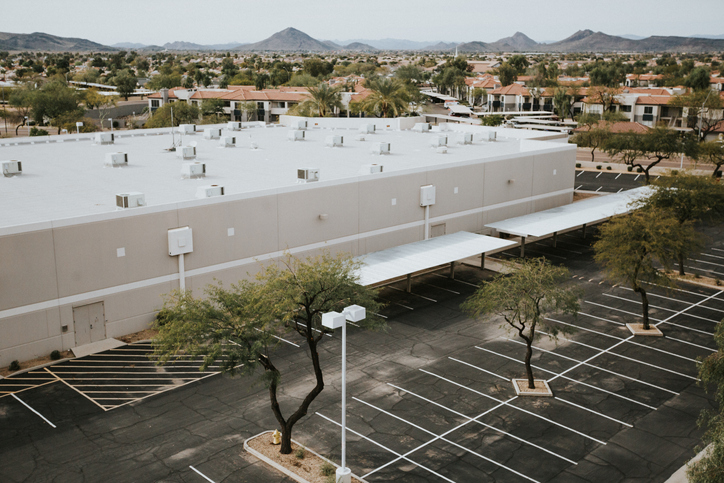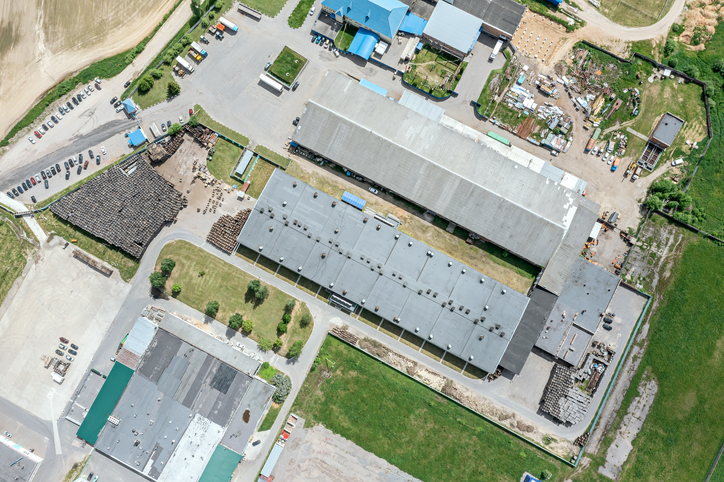Commercial Roof Materials in Orlando
Any building’s long-term survival and functionality depend on installing defense, the best commercial roof in Orlando. The top is the first line of defense against climatic threats, improving the building’s sustainability, aesthetics, and energy efficiency.
The sub-tropical environment in Orlando calls for careful thought when choosing a commercial roof. A roofing system must survive the hot, humid weather and the rare severe storm while still delivering top performance and longevity. Aesthetics are a crucial consideration due to Orlando’s position as a popular tourist destination and the fact that a building’s roof may significantly affect its overall appeal.

5 Types of Commercial Roof Materials in Orlando
Several roofing materials, each with unique properties and advantages, are accessible in Orlando when choosing a commercial roof. These are some prominent choices for roofing materials to take into account. If you need to install commercial roof in Orlando, here are 5 main material options:
1. Asphalt Shingles
- Cost-effective and widely used option: Asphalt shingles are one of the most common roofing materials due to their affordability and widespread availability.
- Moderate durability and lifespan: While asphalt shingles have an average lifespan, typically 15 to 30 years, their durability is suitable for many commercial buildings in Orlando.
- Good resistance to UV rays and fire: The protecting granules in asphalt shingles are intended to block damaging UV radiation. They also exhibit exceptional fire resistance, adding to the safety of commercial structures.
2. Metal Roofing
- Excellent durability and lifespan: Steel or aluminum roofing, for example, offers excellent toughness and longevity, sometimes lasting 50 years or more. They can survive inclement weather, such as strong winds and heavy rain.
- It provides energy efficiency and reflects sunlight: Metal roofing is renowned for its effectiveness. -They effectively reflect a lot of sunshine, lowering the heat the structure absorbs and cooling expenses.
- Resistant to fire, wind, and pests: Metal roofs are ideal for buildings in hurricane-prone places like Orlando because of their excellent fire resistance and ability to endure heavy winds. Also, they are resistant to pests like termites.
3. EPDM Roofing
- Rubber composite: EPDM, or ethylene propylene diene terpolymer, is a rigid synthetic rubber roofing material frequently used for low-slope roofs.
- Good durability and resistance to UV rays and weathering: The UV, ozone, and weathering resistance of EPDM roofing is high. They are resilient to temperature changes and maintain their flexibility over time.
- Cost-effective option for low-slope roofs: EPDM roofing is cost-effective for commercial structures with flat or low-slope roofs. It offers a trustworthy defense against water entry and is very simple to install and maintain.
4. TPO Roofing
- Thermoplastic material: The roofing of TPO (thermoplastic olefin) is made from polypropylene and ethylene-propylene rubber.
- Energy-efficient and reflects sunlight: TPO roofs are renowned for their energy efficiency since they reflect sunshine and lower cooling expenses. To increase their reflecting qualities, they come in white or bright hues.
- Resistant to chemicals and weathering: TPO roofs are ideal for commercial buildings where chemical exposure may occur because of their excellent chemical resistance. They are also long-lasting and have exceptional weathering resistance.
5. PVC Roofing
- Thermoplastic material with welded seams: PVC (Polyvinyl Chloride) roofing is a durable thermoplastic material known for its strength and longevity.
- Exceptional durability and chemical resistance: PVC roofs are highly durable and have a lifespan of at least 20 to 30 years. They are ideal for structures where chemical exposure is a worry because of their excellent chemical resistance.
- Offers energy efficiency and reflects sunlight: By deflecting sunlight and lowering heat absorption, PVC roofs offer energy efficiency. They help to reduce cooling expenses and make the interior more pleasant.
Factor in long-term costs, including maintenance, repairs, and lifespan
-To do a precise cost analysis, it is crucial to consider the long-term expenditures connected with the chosen roofing material for an accurate cost analysis. The estimated lifespan of the roof, as well as maintenance and repairs, should be considered.
- Asphalt Shingles: Asphalt shingles are less expensive upfront but can need more frequent repairs and replacements over time. The 15 to 30 years on average that they live should be considered when estimating long-term costs.
- Metal Roofing: Metal roofs often endure 50 years or more than asphalt shingles.
- EPDM Roofing: They usually need periodic maintenance, moderate upkeep, and minor repairs. With its resilience and simplicity of care, EPDM roofing might be a wise long-term investment.
- TPO Roofing: TPO roofs last for 20 to 30 years on average. In general, they need minor upkeep and routine inspections. They are often inexpensive to repair, which adds to their long-term cost-effectiveness.
- PVC Roofing: PVC roofs can last twenty to thirty years or more. They are durable and require little care. While their long-term performance and few maintenance requirements make them cost-effective in the long run, their initial installation costs are more significant.
Consider potential energy savings and tax incentives for energy-efficient roofing options.
Any energy savings and tax benefits linked to energy-efficient roofing alternatives should be considered while calculating expenses. Energy-efficient roofs may be eligible for tax incentives or refunds and can help keep cooling expenses down.
- Metal Roofing, TPO Roofing, and PVC Roofing: These materials are well-known for being energy-efficient and reflecting sunlight, lowering the amount of heat a structure absorbs. Throughout the life of the roof, this may result in energy savings.
- Tax Incentives: If tax breaks or rebates are offered to install energy-efficient roofing, check with your local government and programs. The initial installation expenses may be partially offset by these incentives, which have long-term financial advantages.
Think about the effects of storms, strong winds, and plenty of rain in the area.
The location of Orlando puts it in a region that is susceptible to hurricanes and tropical storms. Strong winds, a lot of rain, and the possibility of flying debris are all potential effects of these weather phenomena. Considering these severe weather conditions is crucial when choosing a business roof.
Seek roofing materials tested and graded for wind uplift resistance, such as those approved by Factory Mutual (FM) or Underwriters Laboratories (UL). These certificates show that the roof can endure strong winds and protect itself from wind-driven debris damage.
Take into account the roof’s capacity to withstand significant rains as well. To guarantee efficient water management and avoid ponding or water incursion that may cause leaks or structural damage, evaluate the design and drainage systems.
Conclusion
While examining various roofing material possibilities, one may consider price, toughness, and resilience to UV radiation, fire, wind, chemicals, and weathering. Reading each roofing material’s required maintenance and future expenses is crucial when considering maintenance requirements. A complete cost analysis includes comparing initial installation costs, considering long-term expenses like maintenance, repairs, and longevity, and considering possible energy savings and tax benefits for energy-efficient roofing alternatives.
